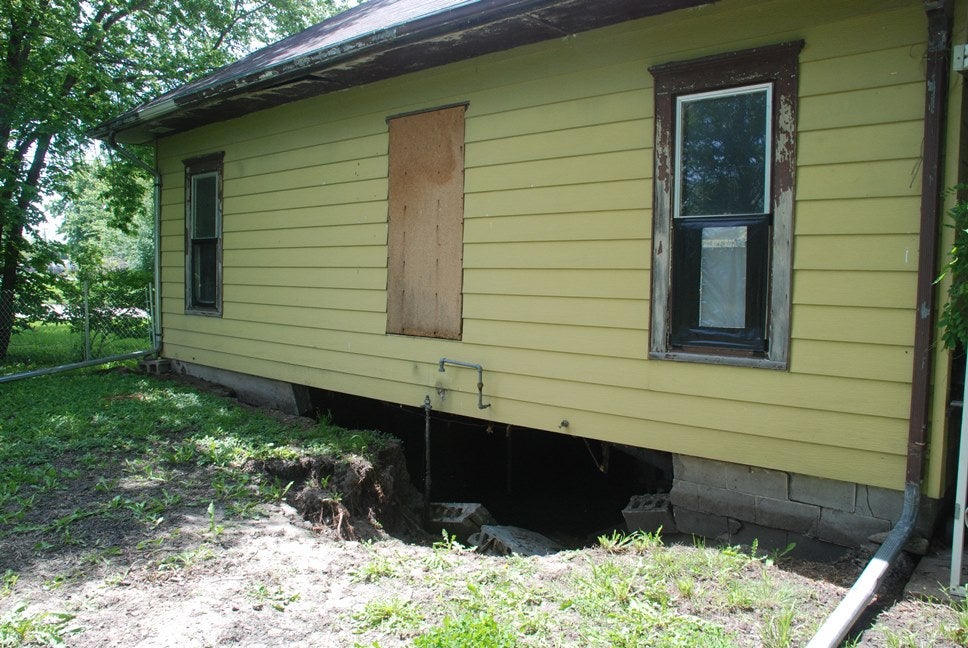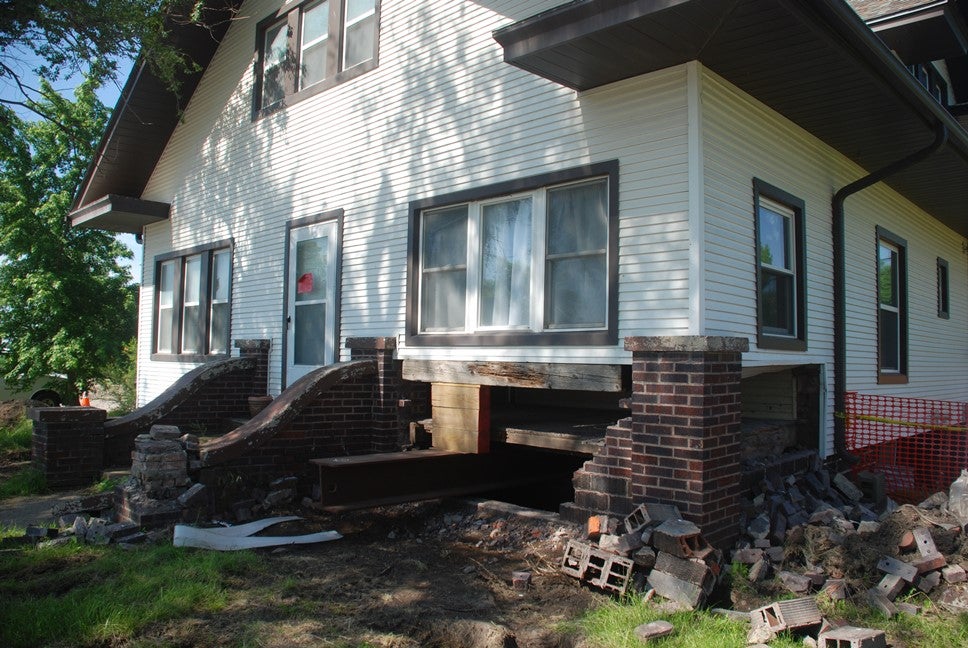By Mitch Paine, CFM
From June 2016 Floodplain Management Today
Basements are a way of life for most Nebraskans. We store things in them, host parties in them, and have bedrooms or home offices in them. They also act as storm shelters, and many of us have weathered high winds or tornados in them. As common as basements are in most of our homes, they are generally not safe for floodprone areas and cause problems for both life safety and property loss.
During flooding in May of 2015, a Fairbury woman drowned in her basement as she sought shelter. Floodwaters rushed in and she couldn’t escape. This example highlights one of the reasons why living areas or storm shelters are not allowed below BFE.
Basements also cause headaches for property owners because of their flood damage potential. Thousands of Nebraskans faced extensive flood repairs in their basements during the 2015 flooding. Nearly $3 million was paid out in NFIP claims in Lincoln, DeWitt, and Beatrice alone, much of it basement damage.

Understanding when basements are allowed or not can be complicated. This article aims to give floodplain administrators a better overall understanding of how to regulate buildings planned with basements in flood risk areas and a basic overview of insurance and mitigation measures.
Basic Permitting
In Nebraska, new or substantially-improved residential buildings must be built with the lowest floor, including basement, to at least 1-foot above base flood elevation. This requirement underlies all of our community
development decisions in floodplains. Often, this precludes a home from having a basement or the property owner must find a location for their new home outside of the special flood hazard area. Homeowners who can’t build with a basement are encouraged to install a safe room as a tornado shelter. Many property owners seek a Letter of Map Change to remove their property from the floodplain.
Letters of Map Change
Property owners often pursue a Letter of Map Amendment (LOMA) or a Letter of Map Revision Based on Fill (LOMR-F) to remove their property or building from the floodplain and remove the mandatory purchase of flood insurance requirement. By doing so, the property then lies in Zone X. Many property owners see that as a free pass to build however they want and will often drop a basement in their home. If a property owner has obtained a LOMA, there are few community processes to prohibit a basement, even though it likely would still be floodprone.
For the LOMR-F process, a community official does have the ability to influence the permitting process further. An applicant for a LOMR-F must submit to FEMA a community acknowledgement form, which requires a signature and statement from the floodplain administrator. The statement says, “we have determined that the land and any existing or proposed structures to be removed from the SFHA are or will be reasonably safe from flooding…,” in addition to ensuring all other permits are obtained. By signing the form, the floodplain administrator is taking on some responsibility for future safety of that property because they’ve certified that the structure is “reasonably safe from flooding.”
Floodplain administrators should request certification by a qualified design professional from the applicant before signing the community acknowledgement forms. The condition of “reasonably safe from flooding,” which seems vague, is further outlined in Technical Bulletin 10 (TB-10).
Technical Bulletin 10
TB-10 outlines an evaluation process to ensure a property located on fill or near the floodplain is reasonably safe from flooding. A number of options, specifications, and technical details are presented that can help floodplain administrators and property owners better understand how to keep buildings safer. Specifically for floodplain administrators, TB-10 lays out a simplified approach to design requirements that communities can adopt into a checklist for applicants. By meeting all of the requirements of the simplified checklist, a community and the property owner can have some assurances that the property, as designed, will be reasonably safe from flooding.
NeDNR would advise requiring LOMR-F applicants to meet this simplified checklist before being given a community acknowledgement form. Doing so can lessen the burden of responsibility of signing this form.
Building Restriction Agreements
If a floodplain administrator wants to ensure that a building as part of a LOMR-F application is as safe as possible from flooding, the community can put conditions on signing the acknowledgement form. The City of Lincoln requires LOMR-F applicants to sign a ![]() Building Restriction Agreement that keeps floodplain management regulations on that property. Even though the property owner would hold a LOMR-F, the building restriction agreement still requires the building to be elevated to 1-foot above BFE, exclude a basement, and all other aspects of the floodplain management ordinance. By doing so, Lincoln ensures that property owners can be removed from the floodplain for insurance purposes, but still remain as safe as possible from flooding.
Building Restriction Agreement that keeps floodplain management regulations on that property. Even though the property owner would hold a LOMR-F, the building restriction agreement still requires the building to be elevated to 1-foot above BFE, exclude a basement, and all other aspects of the floodplain management ordinance. By doing so, Lincoln ensures that property owners can be removed from the floodplain for insurance purposes, but still remain as safe as possible from flooding.
Flood Insurance and Basements
Many pre-FIRM or grandfathered post-FIRM buildings have a basement and carry a flood insurance policy. After flooding events, floodplain administrators often hear from insurance agents that basements are not covered by the NFIP. Basements do have coverage, although limited. NFIP coverage includes clean-up expenses as well as items used to service the structure such as furnaces, air conditioners, electrical systems, and heat pumps. Flood insurance policies also cover structural elements such as footings, foundations, and stairways. Improvements, however, are not covered and would include finished walls or floors as well as contents of finished basements. Policyholders should always file a claim after a loss, even if the agent doesn’t think basement damage would be covered.
Homeowners should also be encouraged to purchase flood insurance even if they follow all LOMR-F or LOMA processes. Once a property is removed from the floodplain via those processes, property owners can obtain a preferred risk policy, which is much less expensive than a standard flood insurance policy. Additionally, property owners with a basement who are concerned about the cost of flood insurance could fill in their basement and elevate the utilities. By doing so, the lower flood would be the next higher floor and flood insurance rates could go down.
Reducing Flood Risk
Overall, NeDNR suggests two options to reduce property risk and community liability: adopting a review process consistent with TB-10 for all LOMR-F applications or implementing a building restriction agreement that requires full floodplain compliance regardless of the outcome of the LOMR-F review. By implementing either of these options, you are helping property owners keep their buildings and families safer from flooding, while also helping them obtain letters of map change.
For more information, follow the links below or feel free to contact Katie Ringland at Katie.Ringland@nebraska.gov.










